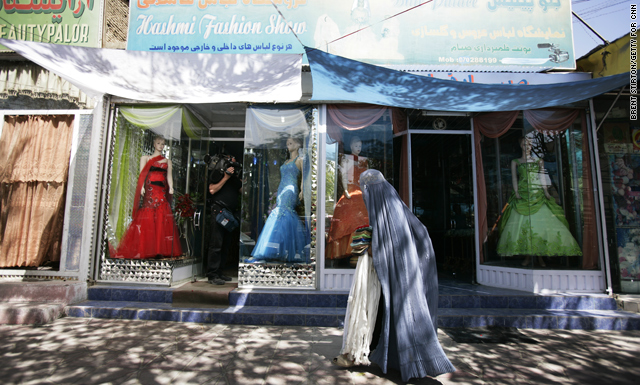What it means to be a woman in Afghanistan? Chances are you can’t read or write, you married before you were 18 years old and have around 6 kids, and you may be working — but you’re getting paid half of what your male counterparts make.
On International Women’s Day, look at how women in Afghanistan fare, according to the 2010 report from the United Nations Development Fund for Women.
POPULATION: Females make up almost 49 percent of the 23.9 million people in Afghanistan.
EDUCATION: Despite gains in the last few years in education, only 12 percent of women 15 years old and older can read and write (compared to 39 percent of men).
About a third of the 4.8 million children in grades 1-6 are girls, with about the same percentage in high schools — the number of girls in high school almost doubled from 2007 to 2008.
In college and vocational schools, the proportion drops — about 18 percent of college students are women, and about 15 percent of vocational school students.
MARRIAGE: An estimated 60-80 percent of women face forced marriages in Afghanistan. The mean age of marriage is about 18 for women and 25 for men.
HEALTH: One woman dies every 29 minutes in child birth, the second highest maternal mortality rate in the world. The average woman had 6.3 children. And average life expectancy for women in Afghanistan? Around 43 years old (The life expectancy for U.S. females is around 80 years old, by comparison).
VIOLENCE: Out of the incidents reported against women, about 30 percent were related to physical violence, about the same amount to pschological violence, about a quarter had to do with sexual violence and about 14 percent were a combination of all three categories. And women don’t have to look far for their perpetrators — about 8 in 10 incidents are committed by family members.
AT WORK: About 47 percent of working age women are actually in the labor market, compared to 86 percent of men. Those that are in the work force aren’t getting paid the same as men — about half as much in agriculture jobs, for example.
And odds are if you’re a woman in Afghanistan that you’re not in the legal or military profession — Women make up less than 1 percent of the military, less than 5 percent of judges and less than around 6 percent of attorneys or prosecutors. In 2007 (latest figures available), the number of women in the police force increased to 275 from 164.
POLITICS: The world of politics is a little more favorable workplace for women. Women represent about a quarter of the National Assembly, and about around 20 percent of all government workers are women.
